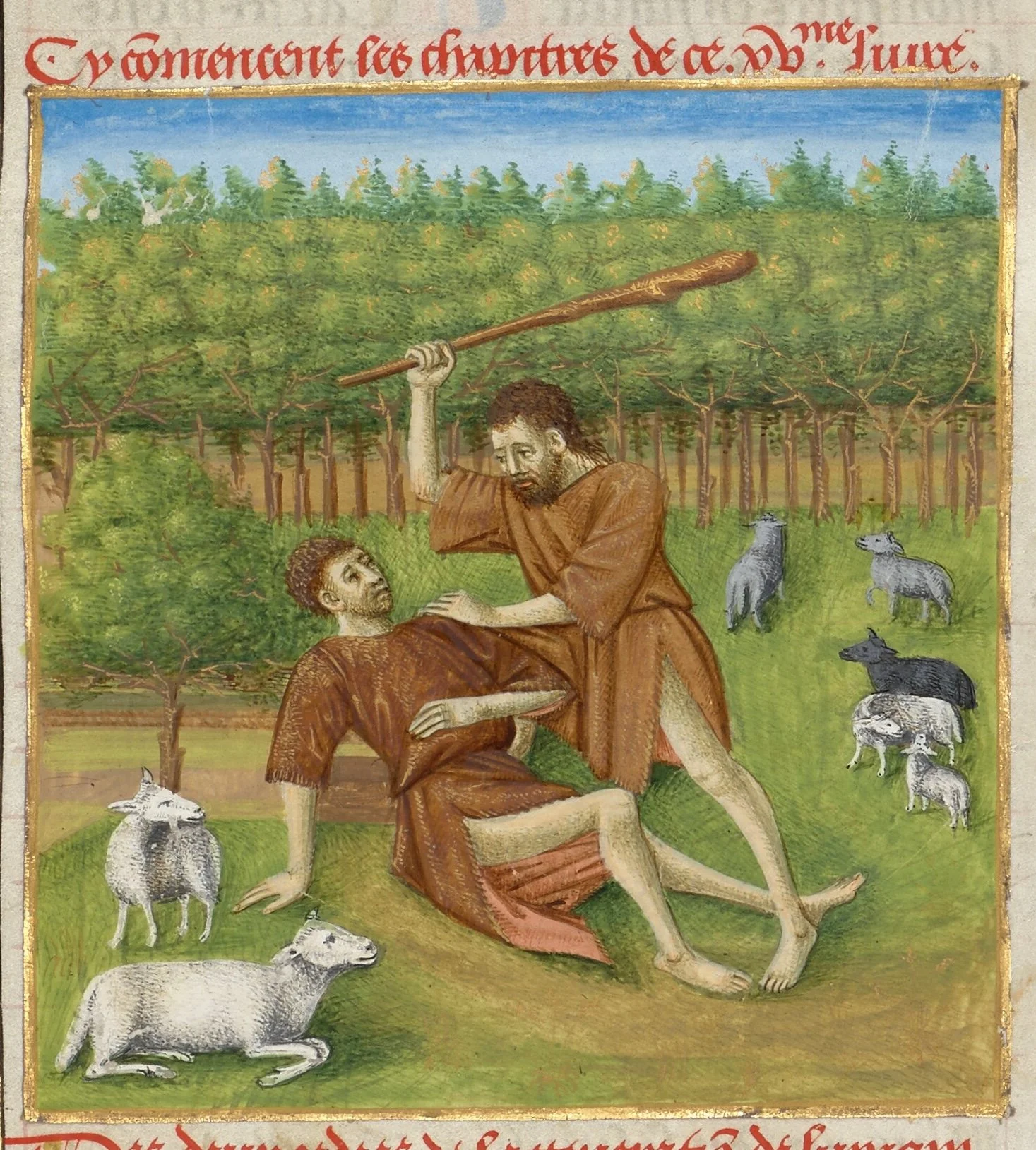Faith’s Horizon: A blueprint for localized stories, conversations, and governance
Cain Killing Able (about 1440). Master of the Geneva Boccaccio, illuminator (French, active about 1445 - 1470). Getty public images.
Americans are desperate to find connection and meaning as legacy institutions spanning media (Los Angeles), computation (San Francisco), finance (NYC), and bureaucracy (DC) corrode at their seams. The norms grounding truth and human understanding are crumbling as these empires corrode the Truth with their intoxicating spectacles. As we drown in dopamine, our biological cells are fragmented into exploding networks of digital cells of machine-generated Utopia: the fantasy of California — Cain’s exile to the Land of Nod for slaying his brother.
But no fear, we are free to set ourselves free from the death grip of digital sin.
Why it matters: Our submission to megasystems reveals what’s missing from our understanding of Life: a localized physical and narrative infrastructure for reinstilling the proximity of Life. The fact that seeing someone’s heart through their eyes is enough to remember that you matter, and that someone else like you exists.
As discussed on the Faithscape project website:
It is crucial that we implement solutions to current gaps in how legacy institutions (including, but not limited to, churches, media organizations, academic institutions) in the US provide community and meaning. Proposed solutions should account for why megachurches are the thriving form of religious structure in the US today, while acknowledging how people’s interaction with information systems, screen technology, and ubiquitous digital media shape their social relationships and political decision-making.
Zooming in on what’s to come for Faithscape:
The Faithscape project’s RP5 phase compiles a synthesis of zoning, spatial and digital design, and social behavior data to create an action plan for repurposing land (of Nod) development to foster local storytelling and community infrastructure: The sole/soul key to set us free.
Instead of building larger temples of finance in isolating downtown cores, ever more pristine college campuses, or massive data center complexes in America’s Heartland, Faithscape envisions development patterns, psychological, and behavioral practices for spontaneously facilitating small-scale community ecologies — small, localized networks (physical, social, informational, digital) where residents can meet, deliberate, and shape shared narratives grounding their lives and community.
To demonstrate how this can be achieved, Faithscape will also develop physical technology for integrating, sharing, and disseminating personalized narratives through collective narrative generation.Our work is an off-ramp to how digital media ecosystems — from TikTok feeds to online congregations — reshape human relationship, understanding, and identity.
Place one of these in your bar, cafe, barber shop, or gas station and you can learn about the personal experiences of people who were there at a different time.
The big picture: Legacy institutions that once supplied moral frameworks and social cohesion are being replaced by algorithmic systems that monetize attention, feed us dopamine, and reinforce our dependency on them by corroding our self-image and relationships. Faithscape reframes the question from “How do we repair the systems corroding Truth?” to “How do we design places and systems where localized forms of storytelling, communication, belonging — individual and collective — can take root?”
What’s next: As Faithscape sketches its path for Phase 1, Phase 2 will focus on developing an implementation blueprint outlining how cities and developers can repurpose parking lots, parks, strip malls, and sidewalks into narrative commons: spaces where localized stories, conversations, and governances can emerge.
The bottom line: Faith may not come from pulpits or party platforms, but from seeing that other people are pretty fucking cool. Religious redesign of everyday space will help people see one another again, share new stories, and rebuild the moral architecture of their communities.

